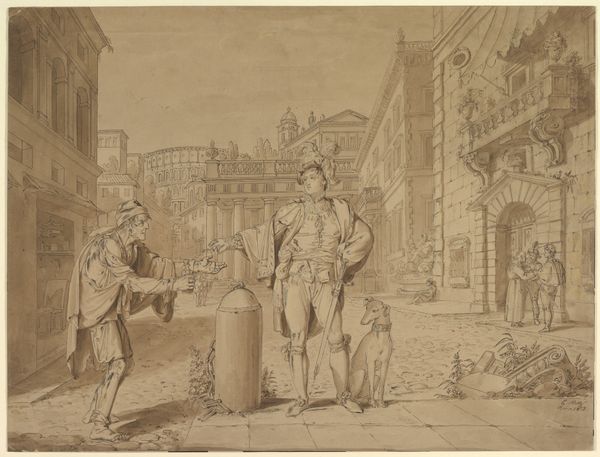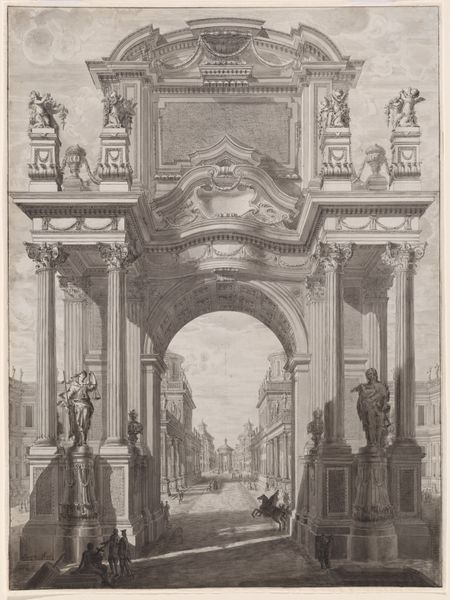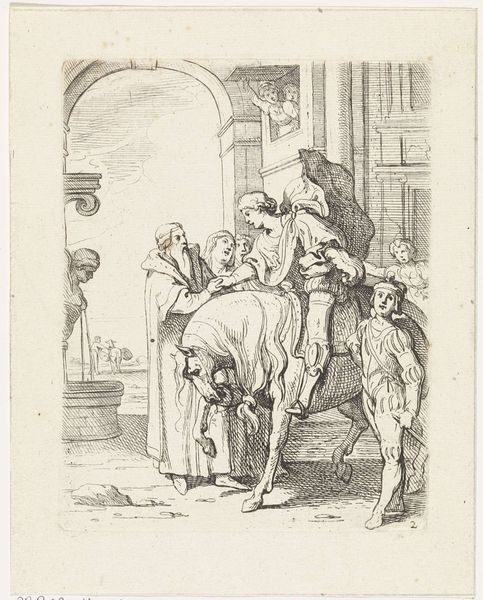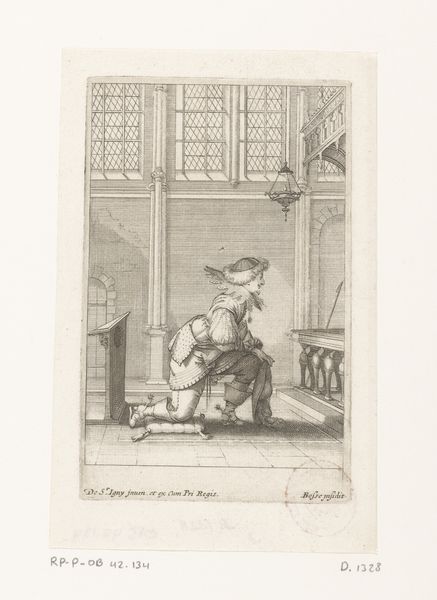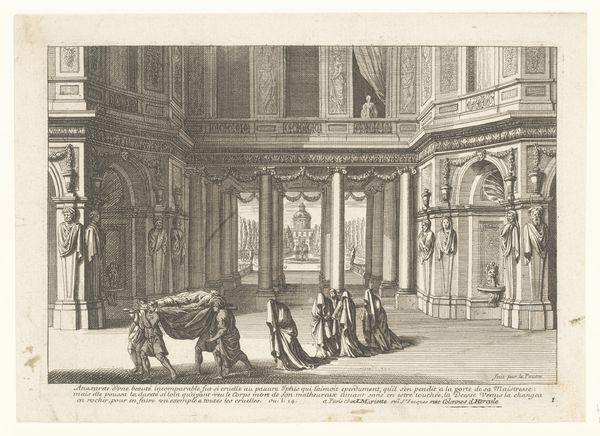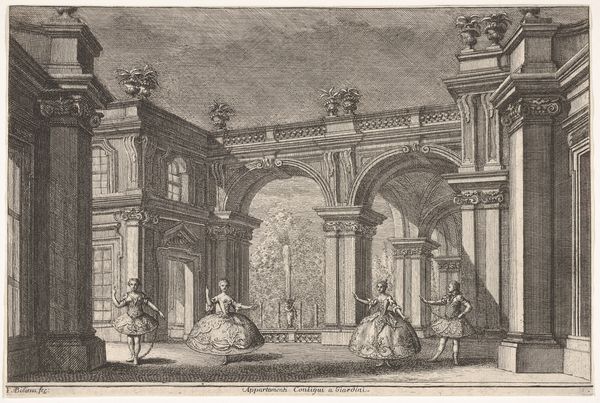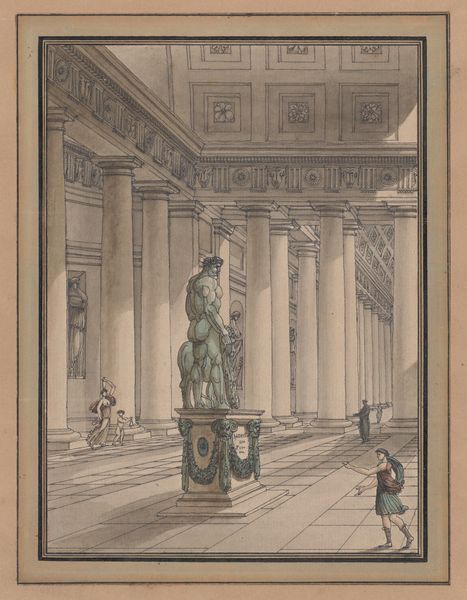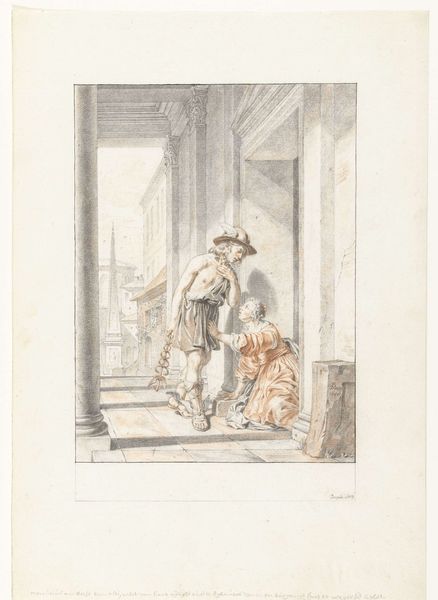
drawing, watercolor
#
drawing
#
figuration
#
watercolor
#
genre-painting
#
watercolor
#
rococo
Dimensions: 161 mm (height) x 165 mm (height) (bladmaal)
Curator: This watercolor and ink drawing, titled "Scenebillede," comes to us from Peter Cramer. Its creation date falls somewhere between 1726 and 1782, a time when rococo aesthetics reigned in Europe. Editor: It's delicate, almost ghostly. The light washes of color and the fleeting lines make it seem as if the scene might vanish any second. There's an air of aristocratic privilege, definitely removed from the realities of ordinary life. Curator: That sense of detachment speaks directly to the socio-political climate of the time. Rococo was very much a style associated with the French aristocracy and, increasingly, other European elites, used to project an image of lightness and carefree indulgence. Think pre-revolution obliviousness. Editor: I find it intriguing how the architectural setting, adorned with statues, dwarfs the figures. It suggests that their individual narratives are really secondary to the grand narrative of power and classical tradition embodied by the building itself. Curator: Precisely! Cramer was working in a period where the patronage system heavily influenced artistic production. Artists were very dependent on the tastes and demands of the aristocracy or institutions of power. Art became about glorifying patrons. This piece appears to explore that delicate balance. Editor: So you think this drawing reflects the artists's awareness of their patrons desires? Perhaps to remind people of an aesthetic pleasure removed from common existence? It all seems like a deliberate performance, especially her exaggerated skirt movement and his somewhat rigid posture. Curator: Certainly! The "genre-painting" aspect shouldn't be overlooked, though. While there's certainly a political element, works like this also offered a glimpse into everyday life, as idealized as it may be. A mirror of the leisured classes gazing upon itself, reflected by the artists who seek to please. Editor: Considering Cramer’s background and the location of the artwork, in the Danish National Gallery, it makes one wonder about the dissemination of Rococo ideals and their potential manipulation through Danish artwork. Curator: Exactly, the history is woven into every brushstroke! Editor: Yes, and reminds me again how art objects speak so compellingly and directly.
Comments
No comments
Be the first to comment and join the conversation on the ultimate creative platform.
